| << Chapter < Page | Chapter >> Page > |
□
Prove the additive inverse property.
We have found the components of a vector given its initial and terminal points. In some cases, we may only have the magnitude and direction of a vector, not the points. For these vectors, we can identify the horizontal and vertical components using trigonometry ( [link] ).
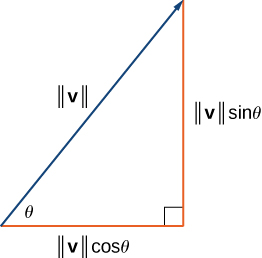
Consider the angle formed by the vector v and the positive x -axis. We can see from the triangle that the components of vector are Therefore, given an angle and the magnitude of a vector, we can use the cosine and sine of the angle to find the components of the vector.
Find the component form of a vector with magnitude 4 that forms an angle of with the x -axis.
Let and represent the components of the vector ( [link] ). Then and The component form of the vector is
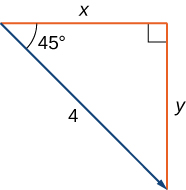
Find the component form of vector with magnitude that forms an angle of with the positive x -axis.
A unit vector is a vector with magnitude For any nonzero vector we can use scalar multiplication to find a unit vector that has the same direction as To do this, we multiply the vector by the reciprocal of its magnitude:
Recall that when we defined scalar multiplication, we noted that For it follows that We say that is the unit vector in the direction of ( [link] ). The process of using scalar multiplication to find a unit vector with a given direction is called normalization .

Let
Let Find a vector with magnitude in the opposite direction as
We have seen how convenient it can be to write a vector in component form. Sometimes, though, it is more convenient to write a vector as a sum of a horizontal vector and a vertical vector. To make this easier, let’s look at standard unit vectors. The standard unit vectors are the vectors and ( [link] ).
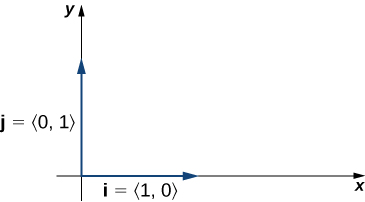
By applying the properties of vectors, it is possible to express any vector in terms of and in what we call a linear combination :
Thus, is the sum of a horizontal vector with magnitude and a vertical vector with magnitude as in the following figure.
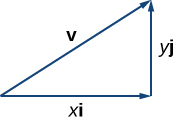
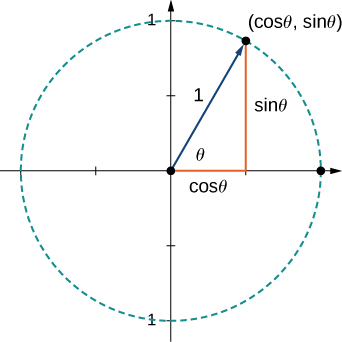

Notification Switch
Would you like to follow the 'Calculus volume 3' conversation and receive update notifications?